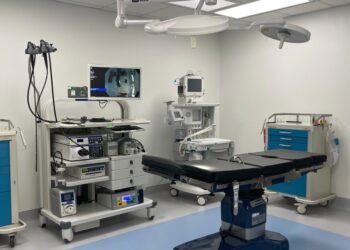Stanford scientists have developed a soft and stretchable electronic skin that can directly talk to the brain, imitating the sensory feedback of real skin using a strategy that, if improved, could offer hope to millions of people with prosthetic limbs.
“We were inspired by the natural system and wanted to mimic it,” said Weichen Wang, whose team published its success in the journal Science. “Maybe we can someday help patients to not only restore motor function, but also restore their sensations.”
Much faster, larger and more sophisticated circuitry is needed before so-called “e-skin” holds promise for people.
But, in a milestone, the device showed remarkable success in a lab rat. When researchers pressed the rat’s e-skin and sent electronic pulses to its brain, the animal responded by twitching its leg.
Scientists have long dreamed of building prosthetic limbs that not only restore movement but also provide perception – sensing pressure, temperature and vibration, for instance — to help restore a more normal quality of life. Skin damage and amputation cause a massive disruption in the loop of perception and movement, so even simple tasks like feeling or grasping an object are challenging.
“If you pick up a glass of beer and you can’t sense that it’s not cold, then you won’t get the right taste,” said Ravinder Dahiya, professor of electrical and computer engineering at Northeastern University in Boston, who is also studying the use of flexible electronics to develop artificial skin.
Electronic skin also could be used to clad robots so they feel sensations in the same way that humans do. This is critical to the safety of industries where robots and humans have physical interactions, such as passing tools on a manufacturing floor.
But the sensation of touch is complicated. Human skin has millions of receptors that sense when they are poked or pressed, squeezed or scalded. They react by sending electrical pulses to the brain, through…
Read the full article here







